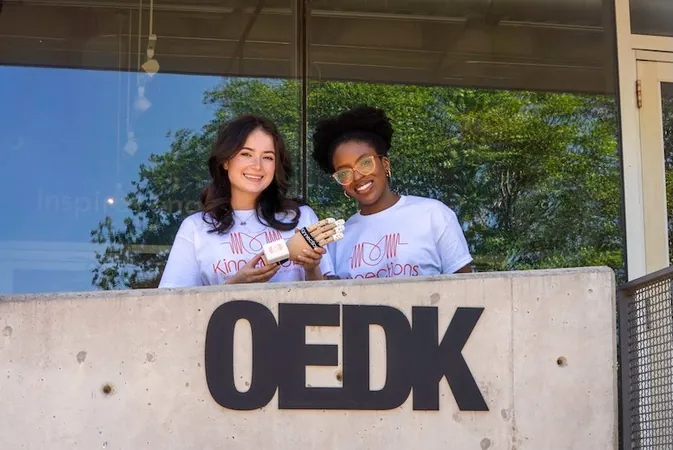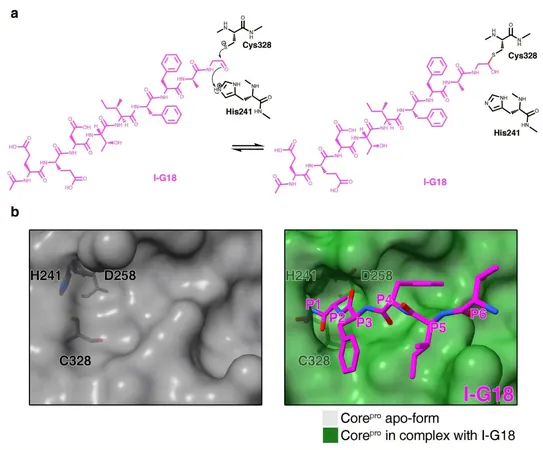
Revolutionary Vibrotactile Glove Designed by Rice Students Offers Hope for Parkinson's Patients
2025-04-09
Author: Li
Innovative Solution for Parkinson's Disease
In a groundbreaking initiative, two engineering students from Rice University are leveraging state-of-the-art neuroscience to create an affordable, wearable glove aimed at improving the lives of individuals suffering from Parkinson's disease.
Harnessing Cutting-Edge Research
Under the mentorship of Maria Oden and Heather Bisesti and with resources from the Oshman Engineering Design Kitchen, undergraduates Emmie Casey and Tomi Kuye have developed a vibrotactile glove that addresses the debilitating symptoms of Parkinson's through a non-invasive method. This innovative design draws inspiration from pioneering research conducted at Stanford University, which investigates how vibratory stimulation delivered to the fingertips may help correct the misfiring neurons associated with Parkinson's.
Inspiring Results from Clinical Trials
Clinical trials from Stanford demonstrated that coordinated vibrations not only aided patients in regaining motor control but also reduced abnormal brain activity. Astonishingly, some benefits persisted even after the patients removed the gloves.
Making Therapy Accessible for All
Recognizing the need for affordability, Casey and Kuye took it upon themselves to create a low-cost version of Stanford's glove. "We aimed to make this breakthrough accessible to those who cannot afford expensive medical devices," Casey explained. Their prototype ingeniously replaces costly motors with smaller vibration motors commonly found in smartphones, tucked into the fingertips of a soft, wireless glove controlled by a custom-built circuit board at the wrist.
Targeting the Root Cause of Neurological Disruption
While many existing gloves merely stabilize tremors, the Rice team’s innovative solution dives deeper, targeting the root cause of the neurological disruption. "This glove stimulates the Pacinian corpuscles in the fingertips to help synchronize the neurons in the brain causing tremors and stiffness," Kuye remarked. "We aim to retrain the brain rather than just mask the symptoms."
A Commitment to Accessibility and Community
The duo's dedication extends beyond engineering. They plan to sell a commercial version at around $250 and have made open-source instructions available online for DIY enthusiasts. With interest from over 200 individuals worldwide, they’re forming a nonprofit to ensure affordability remains a priority. They are also taking preorders and accepting donations, with plans to produce the first 500 pairs by this fall.
Future Testing and Collaborations
As they work to secure Institutional Review Board approval, Casey and Kuye look forward to collaborating with partners at the Texas Medical Center to assess the glove's effectiveness in real-world patients.
Empowering Lives with Innovative Solutions
Oden, director of the OEDK, highlighted the project's significance, noting it exemplifies their goal of empowering students to transform innovative research into practical solutions. Casey and Kuye are not just innovators but empathetic pioneers striving to deliver meaningful relief to those battling Parkinson's, regardless of their financial situation.
Promising Early Feedback
Initial feedback has been encouraging. One prototype had unexpectedly positive results—after wearing the gloves for six months, a friend’s mother diagnosed with early-onset Parkinson's was able to walk unaided. Current recommendations suggest users wear the glove for around two hours twice daily to achieve optimal benefits.
A Small Step Towards Change
While acknowledging that their glove isn't a cure, Kuye emphasizes, "If we can offer people a bit more control and freedom, that’s truly life-changing."


 Brasil (PT)
Brasil (PT)
 Canada (EN)
Canada (EN)
 Chile (ES)
Chile (ES)
 Česko (CS)
Česko (CS)
 대한민국 (KO)
대한민국 (KO)
 España (ES)
España (ES)
 France (FR)
France (FR)
 Hong Kong (EN)
Hong Kong (EN)
 Italia (IT)
Italia (IT)
 日本 (JA)
日本 (JA)
 Magyarország (HU)
Magyarország (HU)
 Norge (NO)
Norge (NO)
 Polska (PL)
Polska (PL)
 Schweiz (DE)
Schweiz (DE)
 Singapore (EN)
Singapore (EN)
 Sverige (SV)
Sverige (SV)
 Suomi (FI)
Suomi (FI)
 Türkiye (TR)
Türkiye (TR)
 الإمارات العربية المتحدة (AR)
الإمارات العربية المتحدة (AR)